by John Henry (July 2022)
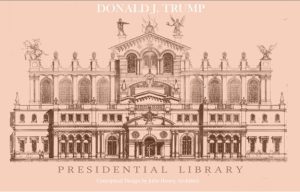
 The question has been asked for several months now: “What would Donald Trump’s Presidential Library look like?” The Office of Donald J. Trump has not revealed any information to date concerning an ongoing process or imagery of a proposed design. Questions remain as to whether it would be feasible to build as preliminarily priced—$2 billion—from private or public funding, or whether Trump would rather not have the federal government’s National Archives (it would be the 15th library) directly involved as in President Obama’s current scheme.
The question has been asked for several months now: “What would Donald Trump’s Presidential Library look like?” The Office of Donald J. Trump has not revealed any information to date concerning an ongoing process or imagery of a proposed design. Questions remain as to whether it would be feasible to build as preliminarily priced—$2 billion—from private or public funding, or whether Trump would rather not have the federal government’s National Archives (it would be the 15th library) directly involved as in President Obama’s current scheme.
My interest in this, while strictly from a ‘sticks and bricks’ design point of view, cannot be evaluated without some sort of philosophical background story to support the initial architectural concept. This wasn’t exactly how most architects were trained, as discussions of morality and philosophy were not part of our presentations. The closest to that idea is a ‘parti,’ an organizing principle for the general design. This was an 18th century approach promoted by France’s Ecole des Beaux-Arts, something that carried on into Modernist architectural rhetoric.
As we will see, the current postmodern culture is highly fixated on the morality of things and the notion has been absorbed by the arts.
 The regimen I experienced at Texas A&M (1978, architecture building at top) was unabashedly a Modernist approach to architecture. The dean studied under Gropius, a German émigré who founded the Bauhaus, and made sure the syllabus and professors organized the educational process strictly by the ‘rules.’ A very neutral and somewhat egalitarian system of instruction, we followed the party line without question. By ‘party line’ I mean the notion that the Modernist teachings and system of design superseded all other previous or historic methods of teaching how to create buildings, specifying which contemporary materials and engineering/construction methods were to be used, etc.
The regimen I experienced at Texas A&M (1978, architecture building at top) was unabashedly a Modernist approach to architecture. The dean studied under Gropius, a German émigré who founded the Bauhaus, and made sure the syllabus and professors organized the educational process strictly by the ‘rules.’ A very neutral and somewhat egalitarian system of instruction, we followed the party line without question. By ‘party line’ I mean the notion that the Modernist teachings and system of design superseded all other previous or historic methods of teaching how to create buildings, specifying which contemporary materials and engineering/construction methods were to be used, etc.
For most of us, we had no idea that there might be other approaches to studying architecture and gaining the requisite technical expertise to be licensed. We questioned nothing and accepted everything.
Astonishing to me, the working premise was that anyone off the street could learn how to be an architect! It simply involved the coordination of “eye-mind-hand.” With great bewilderment, in retrospect, I do not recall the words beautiful, composition, or proportion used very much at all—aspects of design that were commonly discussed prior to 1900. The end result was a “form follows function” product (a Miesian saying). If you solved ‘the problem’ (site, budget, layout, functionality) the solution was eminently appropriate. Unassailable, in fact.
Fine.
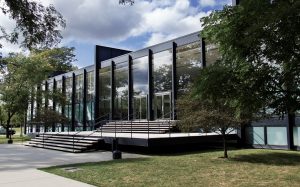
 In the list of eminent Modernists promoted at the time was Frank Lloyd Wright. I liked Wright quite a bit in those impressionable days. He moved my imagination more than Corbusier, Mies Van der Rohe (Crown Hall above), and the other more contemporary ‘White Architects’ in vogue during the late 60s and 70s. Wright’s buildings were actually stunning and beautiful even—changing and evolving. His autobiography gave me “the big head” —you need confidence in the dog-eat-dog world of design and contracting. (Well-connected rich friends are also very important, neither of which most of us had.) We were forced to watch “The Fountainhead,” a very strong morality play about the sacrosanct value of ‘the individual.’ Ayn Rand based her story quite a bit on Wright’s philosophy. Philosophy tended to brush up to morality at times, but was cloaked in the ‘approach’ to design. There were no political discussions during my training. There was zero talk of morality. Architecture was a clean and tidy profession.
In the list of eminent Modernists promoted at the time was Frank Lloyd Wright. I liked Wright quite a bit in those impressionable days. He moved my imagination more than Corbusier, Mies Van der Rohe (Crown Hall above), and the other more contemporary ‘White Architects’ in vogue during the late 60s and 70s. Wright’s buildings were actually stunning and beautiful even—changing and evolving. His autobiography gave me “the big head” —you need confidence in the dog-eat-dog world of design and contracting. (Well-connected rich friends are also very important, neither of which most of us had.) We were forced to watch “The Fountainhead,” a very strong morality play about the sacrosanct value of ‘the individual.’ Ayn Rand based her story quite a bit on Wright’s philosophy. Philosophy tended to brush up to morality at times, but was cloaked in the ‘approach’ to design. There were no political discussions during my training. There was zero talk of morality. Architecture was a clean and tidy profession.
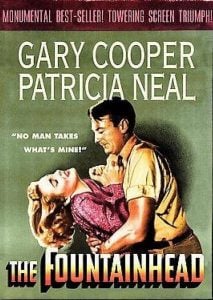
 My work then, naturally, looked Modern. I produced it accordingly; I liked it. At the time, I thought many modern designs showcased in the glossies stunning, one of a kind, attractive, imaginative, etc. But after many years, I became ambivalent about modernism’s primacy, its overuse and often drab results, the appropriateness in certain contexts, and the ramping debate against Modern architecture by a minority of traditional/historic writers and architects. Now architectural design is evaluated as to its base intention and is a target of our inflamed political landscape.
My work then, naturally, looked Modern. I produced it accordingly; I liked it. At the time, I thought many modern designs showcased in the glossies stunning, one of a kind, attractive, imaginative, etc. But after many years, I became ambivalent about modernism’s primacy, its overuse and often drab results, the appropriateness in certain contexts, and the ramping debate against Modern architecture by a minority of traditional/historic writers and architects. Now architectural design is evaluated as to its base intention and is a target of our inflamed political landscape.
In my early college days I was invited to Bible studies and church, and started to read the Bible and became very conscious about right and wrong, sin and God’s way.
 I had consternation with the possibility of perhaps having to agree to design a brewery for an industrial client at some point in my future career. I did not want to face a situation like that (alcohol: sinful) and wasn’t quite sure how to handle it. I never let go that conundrum.
I had consternation with the possibility of perhaps having to agree to design a brewery for an industrial client at some point in my future career. I did not want to face a situation like that (alcohol: sinful) and wasn’t quite sure how to handle it. I never let go that conundrum.
After all, architecture was apolitical, amoral (so we were led to believe) and just taking on a commission about one project type would be no different than any other. You might be called on to do a hospital, fire station, office building, or dance bar. There was no course in ethics at the time; I doubt there is now. But like some tenets of philosophical postmodernism, the idea of morality has crept back into an originally clinical, situation ethics-free, profession (after 1940?) But in this age we cannot acquiesce by claiming we were simply ‘taking orders’.
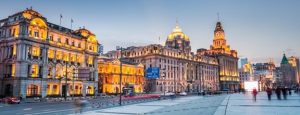
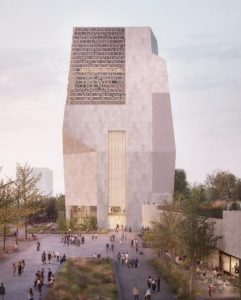 In the wake of our recent wokeness, now particular styles of architecture and other works of art are strictly adhered to and promoted by either one tribe or the other. This started earlier actually, as the Modernists were never inclusionary. They decried and vilified anyone continuing to design buildings based on the language of Greek and Roman antiquity through the Renaissance and revivals up to approximately the turn of the century.
In the wake of our recent wokeness, now particular styles of architecture and other works of art are strictly adhered to and promoted by either one tribe or the other. This started earlier actually, as the Modernists were never inclusionary. They decried and vilified anyone continuing to design buildings based on the language of Greek and Roman antiquity through the Renaissance and revivals up to approximately the turn of the century.
One approach is appropriate for the times, free of any creative constraints, progressive, correct and righteous; the other an anachronism fueled by racist bigots devoid of originality, pushing a deadly symbolism that is not inclusionary nor equitable, offending deeply the minorities and colonials who were exploited and on whose sweat were built right wing nation states.
Despite all this, I recently created a concept sketch for the 45th president and considering disseminating the drawing online … I began to have doubts about the repercussions. This was an unsolicited scheme, something I was curious about and had a strong inclination to test on paper. In 1991 or ‘93 I sent a small portfolio to the Trump organization when I heard they were planning a new subdivision in Palm Beach. The company replied with a nice note, but there was no further discussion.
Almost 30 years passed.I was sure Trump would plan for a library eventually. After his term was over, I hadn’t heard anything about a final tribute to his time in office. Obama received some backlash over the location and funding of the design of his proposed library in the Chicago area. I had never seen a Presidential Library in person.
I searched online to see if there was an official web describing the progress of an ongoing library design and found the Trump Library website with no drawings or discussion of what might be in the planning stages at the time. However, the other search results included derogatory and deprecatory images, memes, essays and faux webs—and worse.
As of this writing, either Trump’s group hasn’t started thinking about this (doubtful) or what they have in mind is being kept under wraps. I can imagine, in fact, just about anything put forward right now (and something like what I propose) being lambasted on several levels and used against him ahead of his upcoming campaign.
But.
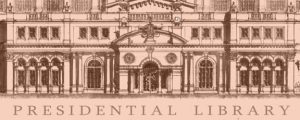
I felt I had to design something proper or fitting, to offer up as an honorific, exemplifying the Trump legacy—and damn the torpedoes.
Then I started thinking about those torpedoes. Recall the baker a few years ago who refused to bake a cake for a gay couple. They were smeared of course and wrung through the courts. What would happen if an architect refused a commission on … political, religious, or moral grounds? Has it ever happened? Probably yes, but not with a cancel culture condemning the act for a litany of reasons. Most architects and their clients are more interested in having things built on time and under budget.
 Did liberals or conservatives shun modernist Phillip Johnson’s skills even though he agreed to witness the shelling of Warsaw with a fascist Nazi entourage? He became more famous in fact and richer than most other architects at the start of his career, gaining many Jewish clients (did they know?). Trump even engaged him in a remodeling.
Did liberals or conservatives shun modernist Phillip Johnson’s skills even though he agreed to witness the shelling of Warsaw with a fascist Nazi entourage? He became more famous in fact and richer than most other architects at the start of his career, gaining many Jewish clients (did they know?). Trump even engaged him in a remodeling.
Wright was a socialist but designed large buildings for industrialists/capitalists. It didn’t bother him as long as he got the commission. Corbu was a fascist but revered as one of the leading figures in modern architecture. Of course, no personal or political background information (dirt) was offered up in the college years of our revered ‘masters.’ These things were simply not discussed. (I found out years later about Wright’s philandering at least.)
Fine again.
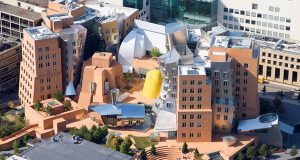
It can be shown (by years of endorsements and other pronouncements) that most Modernist/PoMo/Decon architects, the famous ones, have an affinity for leftist values. (Keep in mind that most architects after WW2 were Democrats because of the many government commissions they chased.) Democrat minded architects are proud of backing and sponsoring many causes now popular solid planks of the Democratic party. A telling moment of whose side who is on is when Trump released Executive Order 83739 “Promoting Beautiful Federal Civic Architecture.” This was an edict mandating Traditional architecture for future Federal buildings, including remodelings. You might guess that most conservative artists and architects supported the order. The American Institute of Architects was incensed and most left wing (Democrat) talking heads, writers and pundits condemned the act as ‘Eurocentric, exclusionary, white nationalist doctrine, ignorant nostalgic conservatism, tribal propaganda, etc.’
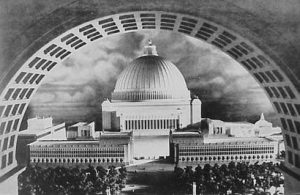
I think it is clear to everyone, at this point in time especially, that art and architecture have been long politicized and the focus is yet again on style and approach to design. Yes, Mussolini and Hitler adopted a classicism on steroids for their use. But this country did not. Britain, Spain, France, Italy and Portugal built their principal colonial structures based on the Renaissance inspired classicism of the time. They adopted its tenets for use in private and public buildings. Many examples show a regional mix in fact. Europeans recoiled from the Nazi reworked and enlarged Greco/Roman symbolism and have been content for the last 76 years to sweep it away from their consciences by erecting almost entirely Modernist (which could be termed ‘progressive idealist’) buildings. Function please, no symbolism or evocation of our dark past …
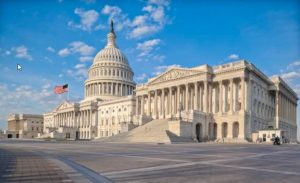
Our public and federal buildings elicit the concepts of democracy and freedom. The early designs of our Capitol, White House, Supreme Court, the Jefferson Memorial, etc. are symbolic of our basic political, legal, and social beliefs, hearkening back to the teachings of Athens and Rome. We have a unique heritage represented by appropriately styled monumental structures.
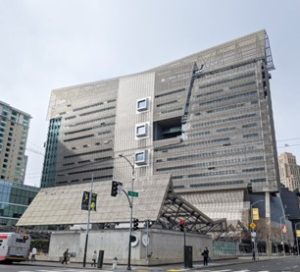 One recent example of a government commission is shown at right. What exactly does the design of the Federal Building in San Francisco exemplify? Does it evoke good government, a trust in our leadership, or something else? Is it more an exercise in technique?
One recent example of a government commission is shown at right. What exactly does the design of the Federal Building in San Francisco exemplify? Does it evoke good government, a trust in our leadership, or something else? Is it more an exercise in technique?
Since the strict adherence of the Modernist approach by nearly every university in the United States over more than 70 years, the architects of those academic programs produced years of often brutalist or banal concrete, glass and steel soulless or pointless governmental commissions. The general public, in most part, has coiled in revulsion over many of the abominations pollinated around the country sanctioned by the GSA.
 It was not exactly a white supremacist response in Trump’s Executive Order, but rather a publicly felt rejoinder to (read ‘leftist’ now) countless ugly alienating designs built over half a century. The order was rectifying a too often repeated problem by encouraging instead “stunningly, classically, beautiful (buildings), befitting a world power and source of freedom.” —American First Caucus, House Republicans.
It was not exactly a white supremacist response in Trump’s Executive Order, but rather a publicly felt rejoinder to (read ‘leftist’ now) countless ugly alienating designs built over half a century. The order was rectifying a too often repeated problem by encouraging instead “stunningly, classically, beautiful (buildings), befitting a world power and source of freedom.” —American First Caucus, House Republicans.
Donald Trump’s legacy will be encapsulated in a library to be built from donations and possibly managed by a federal agency.

There are currently no serious designs illustrated on the official Trump owned library web or information on any ideas projected for the future. Online, there are many detracting images and memes concerning this anticipated design. Clinton’s (below) and Reagan’s libraries have contemporary lines, while other presidents have included traditional elements. The older ones seem diminutive and the more recent outsized:
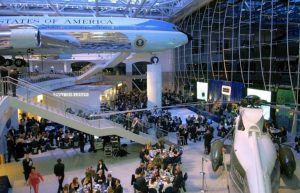
Donald Trump, while the real estate developer, employed modern architecture in his urban holdings, most built in New York and the northeast.
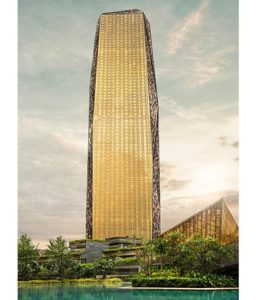

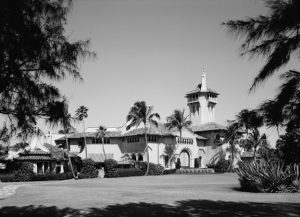
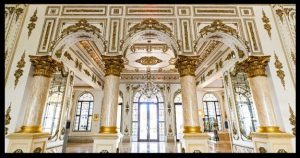
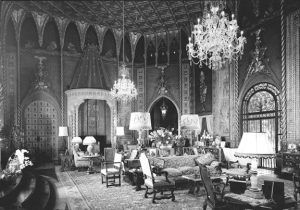
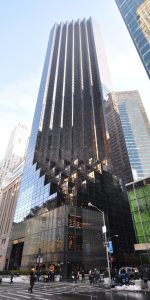 While he has built modernist office and hospitality towers, Trump’s personal style consists of a preference of classical decorative elements for his family, lifestyle, and business associates.
While he has built modernist office and hospitality towers, Trump’s personal style consists of a preference of classical decorative elements for his family, lifestyle, and business associates.
Mr. Trump may finally elect to build a modernist design for his library but I have decided to base the conceptual architectural design for the Donald J. Trump Presidential Library in a classical idiom reflecting Greek and Roman origins, and as further embellished by 18th through 19th century beaux arts classicism.
The concept is intended to mirror the basic theme that parallels Trump’s ideology: personal freedom and democratic tradition, conservatism, nationalism, and observing the rule of law based on our constitutional foundation as inspired by Greek and Roman canon. The sketch is a study representing the symbols of classical liberty (“Democracy and the Western Tradition”) in a formal and serious manner. It is meant to represent Donald Trump’s persona expressed in architectural form.
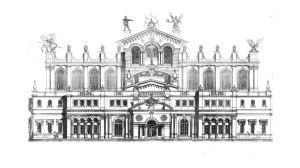
Depending on the anticipated area/size and site, the proposed section illustrated can be the central element or side view, as a minimum. If the side, the main façade would incorporate more sculptural detail and a slightly different cadence of windows, arches, columns, etc. The first and second floors have an undulating geometry and project beyond the second and third floors.
An idea for a longer elevation would be incorporating a frieze running along the perimeter describing the president’s thinking and achievements during an anticipated two terms.

The motif of a center element with attached wings was used by Palladio in his villas on the Veneto. The inspiration for that Renaissance architect was probably the Vatican courtyard:
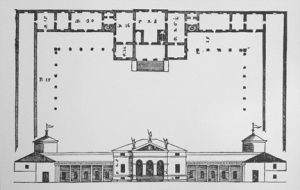
The general ordering for the floor plan of the central block is that offices, bookstore/memorabilia, auditoria, lecture halls, educational, and work areas would be located on the first two floors around the perimeter of a 3 to 4 story sunken central atrium which would allow large exhibits, jumbo screens, a large statue figure, kinetic works, etc. Double central classical staircases, similar to that of the Paris opera, would grace the atrium. The wings could include a large multipurpose speaking or entertainment arena, and a flanking educational center on the other side. I am speaking speculatively of projected functions as I do not know the exact program in mind.

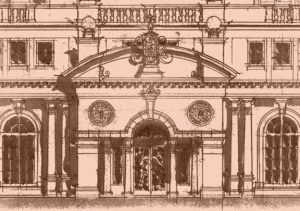
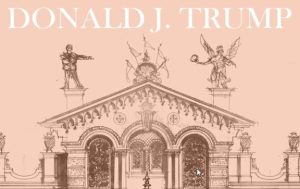
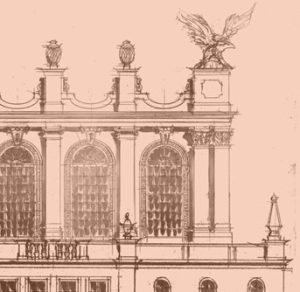 In the sketch at top, Trump is pointing to Nike, the goddess of victory (stance can be adjusted) on podiums on either side of the gable. This may be a bit fanciful and should be further thought out. These will be somewhat monumental figurative sculptures based on United States historical figures, heroic symbolic statues from antiquity, and national emblems.
In the sketch at top, Trump is pointing to Nike, the goddess of victory (stance can be adjusted) on podiums on either side of the gable. This may be a bit fanciful and should be further thought out. These will be somewhat monumental figurative sculptures based on United States historical figures, heroic symbolic statues from antiquity, and national emblems.
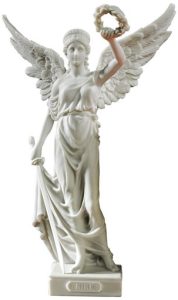 As for the exterior architecture, the first two floors are based on a Beaux Arts composition consisting of paired columns, arched windows, aedicules, modillions, pedestals, and other classical details. The proportions and cadence are based on the Renaissance principle of symmetry (via Leonardo’s sketch of the Vitruvian Man), rhythm, and continuity.
As for the exterior architecture, the first two floors are based on a Beaux Arts composition consisting of paired columns, arched windows, aedicules, modillions, pedestals, and other classical details. The proportions and cadence are based on the Renaissance principle of symmetry (via Leonardo’s sketch of the Vitruvian Man), rhythm, and continuity.
The upper 2 exterior and central areas are intended to reflect the western and southern European architectural influences in southern Florida and Mr. Trump’s current residence in Palm Beach. The Palm Beach geographic area contains an exotic and eclectic mix of historic architectural features in many of the private and public buildings.
The central and tallest element of the three-part design will have symmetrical outer pavilions joined to the main block with colonnade ‘hyphens.’ The floors above the central building are set back to allow an upper open promenade on the perimeter. The large windows must be reinforced as they are designed to let in a good amount of natural light. The height to the peak of the pediment is about 95 feet. The total area is estimated at 175,000 to 275,000 square feet, depending on the projected use and activities.
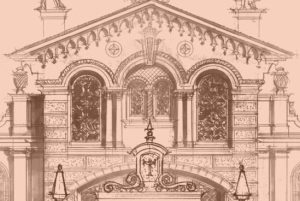
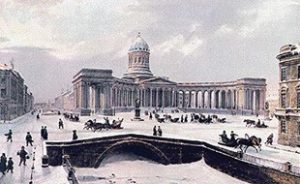 This building is projected to have a steel or preferably all concrete trabeated structure with CMU reinforced block walls on which stone and concrete panels, stucco moldings and other details will naturally adhere.
This building is projected to have a steel or preferably all concrete trabeated structure with CMU reinforced block walls on which stone and concrete panels, stucco moldings and other details will naturally adhere.
Unlike other detracting designs, the only reference to the name Trump will be the letter ‘T’ within the center lower monument.

John Henry is based in Orlando, Florida. He holds a Bachelor of Environmental Design and Master of Architecture from Texas A&M University. He spent his early childhood through high school in Greece and Turkey, traveling in Europe—impressed by the ruins of Greek and Roman cities and temples, old irregular Medieval streets, and classical urban palaces and country villas. His Modernist formal education was a basis for functional, technically proficient, yet beautiful buildings. His website is Commercial Web Residential Web.
Follow NER on Twitter @NERIconoclast
- Like
- Digg
- Tumblr
- VKontakte
- Buffer
- Love This
- Odnoklassniki
- Meneame
- Blogger
- Amazon
- Yahoo Mail
- Gmail
- AOL
- Newsvine
- HackerNews
- Evernote
- MySpace
- Mail.ru
- Viadeo
- Line
- Comments
- SMS
- Viber
- Telegram
- Subscribe
- Facebook Messenger
- Kakao
- LiveJournal
- Yammer
- Edgar
- Fintel
- Mix
- Instapaper
- Copy Link








6 Responses
Timeless Architecture is cheesecake for the brain. Beautiful stuff Mr Henry!
Thank you sir!
Given Mr. Trump sexual appetites I suggest a Bordello, like Mustang Ranch, NV. Simple and to the point.
There are many ideas like yours illustrated online. But if libraries and other monuments to famous leaders were based on their sexual proclivities alone, most memorials would have to be altered to mirror this weakness, including the libraries at least for Clinton and JFK.
A well balanced evaluation of he major trends in architectural design by a veteran and talented architect and writer under the pressures of what have been was and currently are the preferred political tastes of those in fashion at a given moment or the juvenile comments of a critic such as John Galt III whose Roman numerical designation in the style of “Classicists on steroids” only reveals his lack of any authority.
ARCHITECT’S NOTE: As with any design for a building, the initial schematic or ‘parti’ can be revised or reworked completely. This sketch is the first concept rendered and can be a completely different classical creation in the end, or the client may elect to investigate modern or contemporary designs, etc. The more information garnered at the beginning, the better and more appropriate the final depiction/solution.